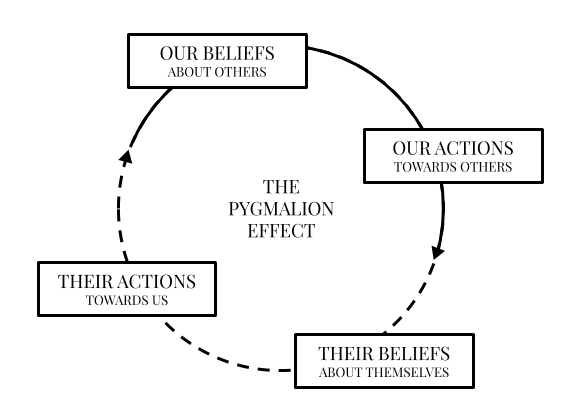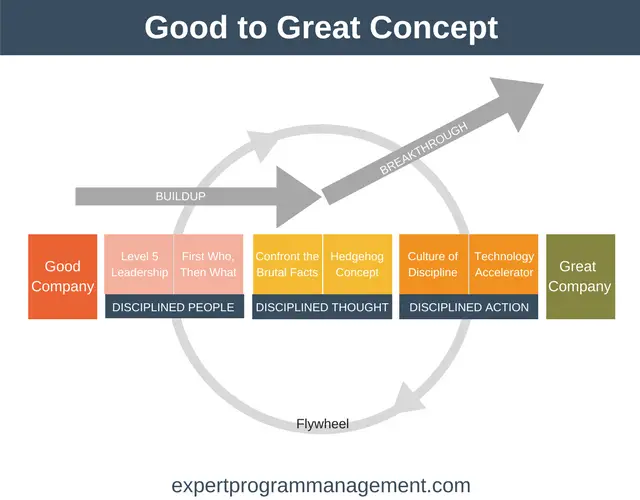Topic 1 Introduction to Leadership and Course Outline
17th & 24th March 2021
I had my head in the clouds and enrolled in the wrong section of Dr Jamilah’s class. Therefore, I was not enrolled in the correct session until 31st March 2021. However, I watched the videos myself and tried my best to catch up with the materials presented during the week of my absence.
Like most classes, the beginning lectures explored the formal definition of a leader/leadership and the influence one yields on his followers. I learned that effective leadership is essential in crisis situations, maintaining organizational performance and employee job satisfaction, leading to a successful organization overall. A leader can effectively lead with an objective in mind and the potential to influence change within an organization for continual development.
Topic 2 Leadership Traits and Ethics
31st March 2021
This was my first class meeting the kind Dr Jamilah in-person (video I mean). Her classes are so interactive and inclusive. Students participate and give their opinion with regards to the subject discussed freely, and this is welcomed. It establishes conversation and encourages critical thinking about the topics discussed as well. I loved the environment more so than the videos supplementing our lessons. I also met my group members during this session. The presentations for assessment 1 began this week, which began with Leadership Traits and Ethics.
I learned something new today, which was Theory X, Theory Y and the Pygmalion Effect! Though I feel the theory is rather simplistic and primitive, I think it’s worth exploring. For instance, people can be led autocratically by a theory X leader or in a participative manner by a theory Y leader, which in turn produces different types of effects on their followers. The Pygmalion effect was something rather new and unheard of for me. It simply suggests that the level of a leader’s expectation of his followers will yield the resulting action. It’s somewhat philosophical, and I think it relates to what Dr Jamilah always says in class. “What you give is, what you get”. A leader who expects high performance from his followers will receive excellent results and vice versa.

Activity 1: “McGregor published Theory X and Theory Y over 30 years ago. Do we still have Theory X managers among us? Why do you think so?” Please share your thought.
While the findings may seem dated and most corporate practices should already be leaning towards a more positive management style, this is obviously not the case. Some of us are fortunate enough to have worked with bosses that inspire us and allow us to contribute productively at our pace in a nurturing workplace environment. However, some of us have certainly had to deal with a micromanaging boss at our workplace, possibly even causing us to lose our motivation to continue with said company. Especially during the COVID-19 pandemic and work from home policies came into play, many employees had to experience being monitored for levels of productivity. The lack of trust that an employee can produce similar results by working remotely is a key trait of the theory X management style. In order to punish employees who were slacking off, the “carrot and stick” approach is also used to ensure employees are fear-driven into being productive. It is safe to say that theory x managers are certainly not obsolete.
Nevertheless, I believe most workplaces in Malaysia practice neither Theory X nor Y management styles almost exclusively within their organizations. Larger firms that focus on a goal-oriented setting may practice and adopt a mixture of these managements’ styles. Even factories involving routine and task-oriented work, tend to adopt a more dynamic management style drawing from both theories where applicable. For instance, theory X is usually adopted when managing newly hired individuals, where more direction and micromanagement will be required until they are able to work independently with minimal supervision. I have personally experienced this type of management practice during my internship at a food manufacturing site. Even though the underlying assumptions of theory X are pessimistic, the management style is picked apart and applied where relevant and required. Theory Y, on the other hand, is more practised with a little restraint to ensure individuals who are less motivated do not fall through the cracks and take advantage of this relaxed method of management in the long run. Theory X managers, therefore, do exist but may not exclusively practice this style of management. Instead, a hybrid management practice of both theories is more likely to be adopted and widely implemented in most workplaces these days.
Topic 3 Leadership Behavior and Motivation
7th April 2021
Today, we learned about 3 different leadership models by the University of Iowa, University of Michigan, and Ohio State University respectively and how leaders demonstrate different types of traits and behaviours within the model. We also learned that anything that affects behaviour to produce the desired outcome can be seen as a source of motivation. The real takeaway from today’s class is to think about what level have we come to occupy within Maslow’s Hierarchy of Needs as future leaders ourselves. I have included a picture below for reference. Personally, I am in limbo between safety needs and love and belonging. I say this because, I have achieved parts of each level, but not in a manner that is considered wholesome for either. I still have to look forward to employment upon graduation and a sense of independence stemming from security and property. However, I will strive to someday be in the self-actualization stage.

Activity 2: Have you ever been demotivated before. Based on the video, why do you think the employees were demotivated?
I have certainly been demotivated at my workplace before this. They stemmed from external factors such as a micromanaging boss, lack of recourse for recurring poor performance, and even poor coworkers amongst many. I believe many of us go to work, not only for a paycheck but for a sense of fulfillment of our contribution to society. We do our best through our company to ensure we are being the best versions of ourselves and continuously improve our community with the little that we do within our workplace culture. However, when that carefully curated balance becomes perturbed due to these external factors that we are not in control of, it can lead to demotivation.
In the case of the employees at Despair. Inc,, they were demotivated due to an incompetent leader or boss. People offer their best when their environments nurture their capabilities and supplement their contribution. However, in this case, poor working conditions and workplace ethics from upper management was sufficient to bring the employee morale down and demotivate them. They were frustrated that those in charge to help them function optimally were not doing their job, but were instead employing a more job centred leadership style that neglected the employees’ working conditions. Instead of replacing the malfunctioning headphones as they should have, the employer/boss chose to deal with the situation by giving little consideration to the needs of the employees and instead used his power to threaten the position of the employees, denoting that their services were replaceable. This overall poor leadership style is the major cause of their demotivation. Even if their working conditions continued to stay poor, I believe if the employer genuinely worked on improving it and listening to his employees’ complaints and constructive feedback, they would have been less motivated. This was not the case, therefore they were demotivated.
Topic 4 Influencing: Power, Politics, Networking, and Negotiation
14th April 2021
We learned about the sources of power, 3 types of political behaviour, networking on the job, and the importance of negotiating. If I were to pick out the most prominent lesson this week, it would be that a leader appeals to his followers due to his/her own charisma and behaviour, and this is his personal sense of unyielding power. This will not be threatened unless the nature of the leader changes in the course of his leadership, which is less than likely. Of course, this notion is rather simplified and there are more ways in which a leader is able to wield power based on one’s own traits and characteristics. In addition, we learned that workplace politics are essential to maintain successful and working relationships that enhance productivity and progress within an organization.
7 Types of Power
Activity 3: There are seven types of power. What are they? Please find one example of video that reflect one of this types of power and share with us the link. Attached video is an example of video that I found that reflect one of the power (legitimate). Hope to see your video sharing!
The seven types of power are legitimate power, information power, expert power, reward power, coercive power, referent power, and charisma power. All bosses or managers would naturally be able to wield their legitimate power simply due to their status and hierarchy within the employment system. However, they may or may not use it to their advantage, as some leaders are experts at what they do and thus have access to a wealth of information, thus possessing expert and information power respectively. Bosses also have the power to reward or coerce employees into performing their very best simply through a reward and punishment system. When their employees meet their monthly or annual expectations and company goals, they can certainly expect some sort of reward for their invaluable contributions. Otherwise, they will be facing the coercive brunt and may have to work unpaid overtime hours to meet those expectations. Most leaders are usually well connected before they even reach upper management positions and thus have the power to refer employees to positions they may desire. This is simply due to the time investment they put into networking and expanding their contacts by establishing a rapport of their capabilities. Lastly, charisma comes into play. Being able to work under a leader who is charismatically powerful would truly be an honour as they are usually those we admire and respect within an organisation.
The video I have chosen to share discusses ways in which employees can be rewarded within the workplace. Nowadays, large organizations such as Walt Disney and Groupon already have employee reward programs in place to passively motivate and recognize their contributions.
This video will hopefully share insights into employee motivation, reward, retention and recognition.
Topic 5 Contingency Leadership Theories
21st April 2021
This week we learned about 4 types of contingency leadership theories that are based upon a leader’s behaviours and environment, which were the contingency leadership model, the path-goal leadership model, situational leadership model, and the normative decision model. Out of these four, I am perhaps most fond of the path-goal leadership model, which is comprehensive yet simple to implement successfully with great results in mind. How it will be implemented to 21st-century leaders has been covered in my video post under assignments! 😉
However, the most unique thing I learnt this week is the Least Preferred Coworker Scale (LPC). This came about when researchers attempted to quantify the parameters that make a great contingency leader within Fred Fiedler’s model. One would know their own weaknesses and strengths as a leader when they measure themselves against someone they work with poorly. This will enable them to refocus their energy on the component that requires compensation and work. One of the many examples of what your score tells you is shown below.
This week we were supposed to begin our Assessment 2, the Short Talk assignment on how 21st-century leaders can apply one of the four explored contingency leadership theories. I have posted my video submission separately under the Assignment category.

Topic 6 Communication, Coaching and Conflict Skills
28th April 2021
This week, Group 5 (my groups) presented this topic after Dr Jamilah delivered her lecture. Unlike other weeks, the topic covered this week was focused on skills that a leader should hone rather than a particular model or theory. These skills were communication, coaching and conflict management skills. I spoke about the message-receiving process under the communication spectrum and the importance of soliciting feedback and using it effectively. The gist of this week’s lecture is that leaders have to actively realize their communication tone and message delivering capacity to be an effective leader. Once they have mastered becoming an excellent communicator to produce desired outcomes, conflicts can be managed. Finally, when a leader takes the right tone, they can be a coach or mentor to other employees within an organization.
Activity 4: Please spend some time to read the article below. It is about Myanmar’s Rohingya conflict. Based on your life experience, how do you know when you are in a conflict? Share with us below.
Oftentimes, I find myself trying to rationalize my emotions by bottling them up and trying to resolve it within myself, at least if I can help it. However, when this is not possible, I know I am in a situation of conflict. Arguments and outward disagreements are other ways in which I find myself in a situation of conflict. When I do find myself in a state of conflict, I try to retract and hold back instead of saying or doing things that would otherwise damage the relationship or rapport I have built painstakingly. Whenever I experience conflict with my colleagues or peers, I first try to list out the why’s and how’s. It helps me list the issues that need immediate attention to the ones that seem less important in comparison. If it will affect our work together in any way, it will receive a higher priority than other issues.
In the article, there are clearly strongly different views from both side Rakhine Buddhists and Rohingya Muslims. There are sentiments on each side that one should view before making a judgement. I believe taking a stand on this will not be an easy way to mediate the conflict or look at it from a neutral standpoint. Reducing the argument will not help both parties achieve mutual understanding. In these situations, I firmly believe in the negotiation conflict mediation technique. There isn’t a cut-and-dry solution that these ethnic groups can take. Instead, there should be negotiating for common ground instead of taking matters into their own hands and using violence to assert each other’s will upon one another.
Topic 7 Dyadic Relationship, Followership and Delegation
5th May 2021
This week we learned about the importance of leader-member relationships and the many dimensions it can take when viewed from different lenses/theories. The interesting aspect of this week’s lecture was that some followers tend to exhibit out-group behaviour while others behave with the in-group approach. However, a leader should be able to establish an effective dyadic relationship regardless of how withdrawn they seem from the organization. This is where team-building exercises would be useful and establishing meaning to the work turned in by your subordinates is vital. Once they can correlate their job with a meaningful experience, this out-group will be able to transform into an in-group that is more mentally present and involved with the organization.

This week’s activity involved interviewing my favourite leader. I interviewed someone I look up to, not just in terms of leadership skills but also as an individual; my father. Please hear more of what he has to say in the voice recording in my assignment tab. Till next week!
Topic 8 Team Leadership
19th May 2021
This week we explored the difference between groups and teams and their individual strengths and drawbacks. What I gathered is that an organization stands to gain more from forming a team of individuals rather than a group as they are more likely to exhibit a shared vision and drive that benefits the organization. After assembling a good team, an effective leader should maintain and harness the synergy produced towards task accomplishment. However, with the right leader, a group can be turned into a functional team by reassigning roles, instilling motivation and fostering good work relationships. When this idea is extended to a larger concept, efficient teams from one division can also cross-functionally cooperate to produce results within an organization. The reverse is also true; a self-managed team can accomplish the same by working on the cooperation within the team.
![[image%255B4%255D.png]](https://i0.wp.com/lh3.googleusercontent.com/-aLtMKeJeEIs/VXhu6tQHD8I/AAAAAAAABvo/ibM0zKESYh4/s1600/image%25255B4%25255D.png)
Activity 5: What is the advantages of team leadership?
A team led by a great leader becomes functional and successful for the betterment of the organization. However, team leadership is more beneficial to help an organization thrive than just having an effective leader to propel it all. A good analogy for this is how the cogs in a watch work together to propel the entire mechanism of showing time precisely. Each cog has its strengths and weaknesses, and most importantly, its own role and function.
A well-led team will have sufficient momentum and drive to complete a task with minimal distractions in its aim to achieve a collective goal for its organization. In addition, team leadership drives motivation and strong belief towards the common objective so that tasks are not only completed, but done so enthusiastically and productively. Team leadership will allow for key issues, task conflicts and strategies to be addressed from multiple and diverse perspectives. This will help distribute and delegate the weight of a task to every team player and provide room for other areas of organisational success. Overall, team leadership brings novel perspectives and challenges traditional leadership strategies to progress together as a whole.
Topic 9 Leading Self-Managed Teams
26th May 2021
This week there was no class due on Wesak day. However, we still had an activity to complete. The lecture materials covered the idea of self-managed teams that were self-sufficient and productive enough to bring an organization to greater heights. When I learned about this concept, I thought it was a great notion. It has been nurtured into the management of many large organizations that are always moving forward and require people who were self-sufficient and excellent at doing so.
Activity 6: What are the challenges of implementing self-managed teams effectively? Please share your answer with us in the form of mind map.
Topic 10 Charismatic and Transformational Leadership
The only topic we did not go through or talk about in-depth was this topic. However, after researching and learning whatever I can on my own, I have come to learn much about it and their distinct differences. However, many articles say the same thing; transformational leaders tend to be charismatic, not all charismatic leaders are necessarily transformational. I will explore this further in my transformational leadership column in my e-Portfolio. Do give that a read!
Topic 11 Level 5 Leadership
2nd June 2021
This week we learnt about Jim Collins’ Good to Great flywheel concept. A leader can bring his organization from good to great by having the right people with the right mindset and action.

I loved the bus stop example given during class which aptly explains this concept. With the right people on the bus and the right seat, the final destination will always be great. A leader who can execute and figure this out when forming his team will be more likely to be successful. However, most hiring processes are not so ideal. Therefore, I feel this type of leadership can only be applied when there is some flexibility. Instead of getting rid of people who don’t quite fit within a specific role, reassigning by magnifying might be a more resourceful way to handle the team forming process of a company. In addition, we also learned about level 5 leadership and how scarce these types of leaders are in general. Someday, I aspire to be a level 5 leader who has a synergistic team and lead with empathy.

Activity 7: Level 5 leadership (Jim Collins, 2001) is an essential factor for taking a company from good to great. He describes the hierarchy as having 5 different levels that progress from the bottom to the top. Name the five levels from the hierarchy.
The 5 levels of the hierarchy are as listed below.
- Level 1: Highly Capable Individual
- This type of individual makes productive contributions through talent, knowledge, skills, and good work habits.
- Level 2: Contributing Team Member
- This type of individual contributes to the achievement of group objectives and is a team player.
- Level 3: Competent Manager
- This individual organizes people and resources towards achieving the team’s objectives efficiently.
- Level 4: Effective Leader
- This type of leader drives commitment and stimulates motivation to achieve the set compelling vision and high performance standards
- Level 5: Executive
- This type of leader builds enduring greatness with personal humility and professional will.
9th June 2021
Class was cancelled this week. So, I continued to work on my e-Portfolio and remaining activities instead.
Topic 12 Authentic Leadership
16th June 2021
This will be my last weekly reflection entry. We have sadly come to an end to this amazing and intellectually stimulating class. But all good things also come to an end. Well, for me, it’s merely the beginning of carrying with me the life lessons and implementing them within my leadership style. Today, we learnt about authentic leaders who have reached a self-actualization level as described in Maslow’s hierarchy of needs.
Authentic leaders are leaders that have a crucible moment. This was a completely new concept to me. A crucible was defined as a signal event or challenging situation in a leader’s life. Once they have experienced and grown from it, they become powerful leaders, true to their nature. Some of the leaders that we studied today were Howard Schultz (Founder of Starbucks), Oprah Winfrey (Talk show host and philanthropist), Mahatma Gandhi (Political Ethicist and Peace Reformist), and Nelson Mandela (1st South African President). They led with conviction and reflected their True North in their leadership style, which again was a new concept. Bill George’s True North model embodies your calling in life. It is a symbiotic combination of your values, beliefs and purpose in life which is unique to you. I know at this stage of life, I have yet to discover my True North. But I think I will eventually get there through many experiences.


Activity 8: Mahatma Gandhi is one of the authentic leaders in the world. What are the characters of Mahatma Gandhi that characterized him as an authentic leader?
Mahatma Gandhi was an authentic leader because he was a very self-actualized man who led with a heart filled with purpose, more than a personal goal. His purpose was to free his country from foreign invaders and help it gain independence in the long run. He was genuine and very outright with his personality traits, principles and beliefs, which made him very popular globally by people from all walks of life. People were drawn to his ideologies and selflessness, which garnered him a following on his principle of non-violence (ahimsa) as a conflict resolution method for mass action.